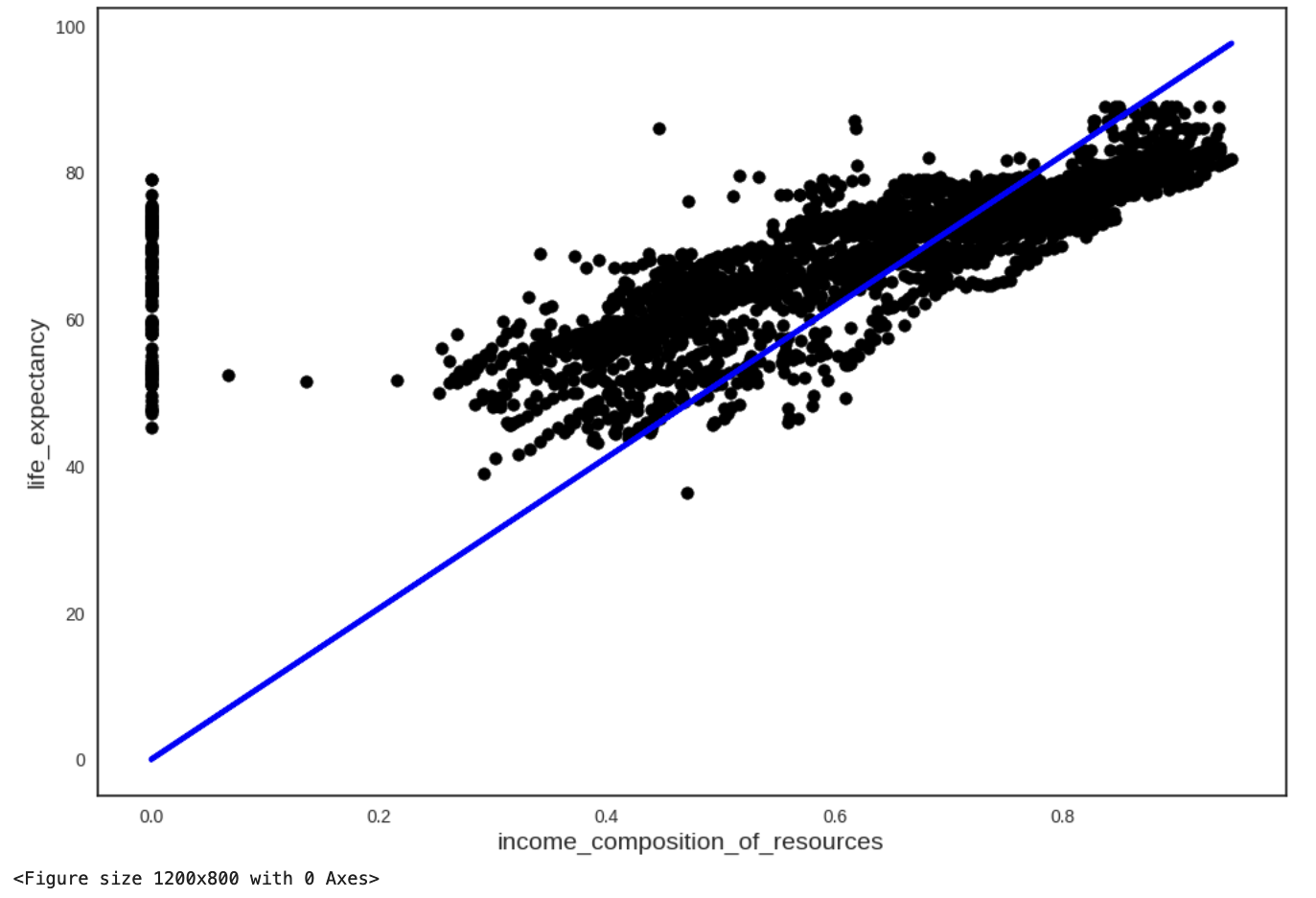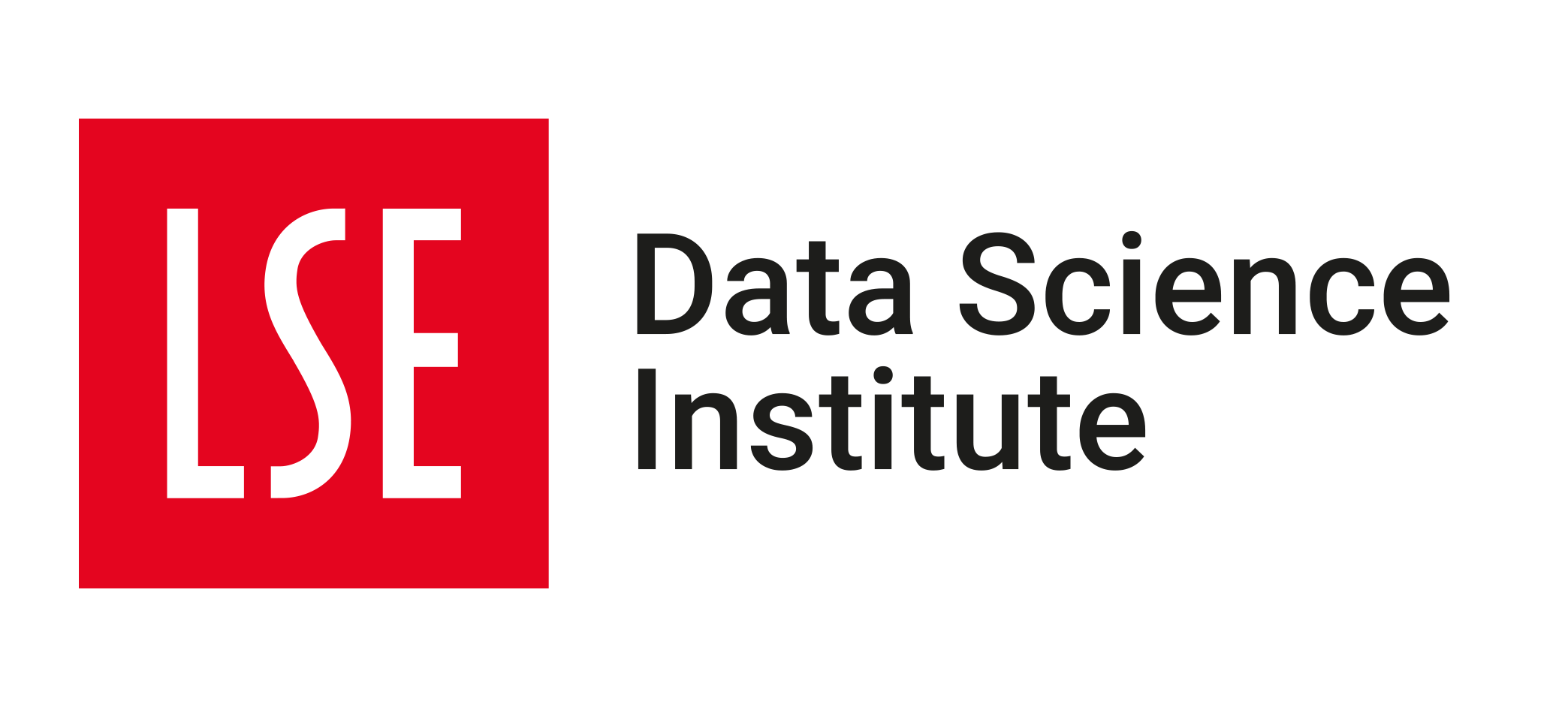🗓️ Week 07
Machine Learning I
DS101 – Fundamentals of Data Science
06 Nov 2023
⏪ Recap
- A model is a mathematical representation of a real-world process, a simplified version of reality.
- We saw examples of a linear regression model.
- It contains several assumptions that need to be met for the model to be valid.
- Social scientists have been using linear regression models for decades.
⏪ Recap: Linear Regression
We also saw how linear regression models are normally represented mathematically:
The generic supervised model:
\[ Y = \operatorname{f}(X) + \epsilon \]
is defined more explicitly as follows ➡️
Simple linear regression
\[ \begin{align} Y = \beta_0 +& \beta_1 X + \epsilon, \\ \\ \\ \end{align} \]
when we use a single predictor, \(X\).
Multiple linear regression
\[ \begin{align} Y = \beta_0 &+ \beta_1 X_1 + \beta_2 X_2 \\ &+ \dots \\ &+ \beta_p X_p + \epsilon \end{align} \]
when there are multiple predictors, \(X_p\).
Note
- As a well-studied statistical technique, we know a lot about the properties of the model.
- Researchers can use this knowledge to assess the validity of the model, using things like confidence intervals, hypothesis testing, and many other model diagnostics.
Limitations of Linear Regression Models
The typical linear model assumes that:
- the relationship between the response and the predictors is linear.
- the error terms are independent and identically distributed.
- the error terms have a constant variance.
- the error terms are normally distributed.
Important
Barely any real-world process is linear.
Making Predictions
We often want to use a model to make predictions
- either about the future
- or about new observations.
⏪ The simple linear model from W05
Remember the simple linear model from W05?

What happens when we extrapolate?
What kind of prediction would this model give if we were to set the independent variable to 1 (i.e maximum possible human development index) ?

What happens when we extrapolate?
What kind of prediction would this model give if we were to set the independent variable to 1 (i.e maximum possible human development index) ?
Since the model equation was: \[\begin{align} \operatorname{life\_expectancy} = & 102.9273 \times \operatorname{income\_composition\_of\_resources} \end{align}\]
this means a human development index of 1 (i.e income_composition_of_resources=1) means a life expectancy of 102.9273 years!
The thing about predictions
- We can use a model to make predictions about the future.
- We can also use a model to make predictions about new observations.
- But we need to be careful about the assumptions that we make about the data.
Note
We will focus a lot more on predictions from now on.
This is because Machine Learning, in practice, is all about making predictions.
What is Machine Learning?
A definition
Machine Learning (ML) is a subfield of Computer Science and Artificial Intelligence (AI) that focuses on the design and development of algorithms that can learn from data.
How it works

How it works
- The process is similar to the regular algorithms (think recipes) we saw in W03.
- Only this time, the ingredients are data.
INPUT (data)
⬇️
ALGORITHM
⬇️
OUTPUT (prediction)

Types of Machine Learning
Supervised
Learning
- Each data point is associated with a label.
- The goal is to learn a function that maps the data to the labels.
(🗓️ Week 07)
Unsupervised
Learning
- There is no such association between the data and the labels.
- The focus is on similarities between data points.
(🗓️ Week 08)
Supervised Learning
Supervised Learning
If we assume there is a way to map between X and Y, we could use SUPERVISED LEARNING to learn this mapping.
Supervised Learning
- The algorithm will teach itself to identify changes in \(Y\) based on the values of \(X\)
- A dataset of labelled data is required
- Prediction: presented with new \(X\), the algorithm will be able to predict how \(Y\) would be like
Supervised Learning
- If \(Y\) is a numerical value, we call it a regression problem.
- If \(Y\) is a category, we call it a classification problem.
Supervised Learning
- There are countless ways to do that; each algorithm does it in its own way.
- Here are some names of basic algorithms:
- Linear regression
- Logistic regression
- Decision trees
- Support vector machines
- Neural networks
One Practical Example
Suppose you want to be able to tell whether a patient has breast cancer or not.

How would you approach this problem?
Image source: Smithsonian Magazine
What is in the digitized images of biopsies?

About 30 features, among which for each cell nucleus (3), 10 features:
- radius (mean of distances from center to points on the perimeter)
- texture (standard deviation of gray-scale values)
- perimeter
- area
- smoothness (local variation in radius lengths)
- compactness (perimeter^2 / area - 1.0)
- concavity (severity of concave portions of the contour)
- concave points (number of concave portions of the contour)
- symmetry
- fractal dimension (“coastline approximation” - 1)
All of this information constitutes our input.
What about the output?
- The output is something you would normally want to predict or attempt to explain 1
- Also referred to as the label, “ground truth”, target or dependent variable, or simply \(Y\)
- Most commonly it is a numerical or categorical variable
Structure of dataset

Side story
The data shown before actually corresponds to the Diagnostic Wisconsin Breast Cancer Database1 (Wolberg and Street 1995) that was made publicly available (in 1995!) on the UC Irvine Machine Learning Repository (or UCI Machine Learning Repository).
The UCI repository is “a collection of databases, domain theories, and data generators that are used by the machine learning community for the empirical analysis of machine learning algorithms” ((Markelle Kelly, n.d.), “About Us” page).
Time for a break 🍵

After the break:
- Examples of supervised learning algorithms
- Self-supervised learning
Algorithms
The Logistic Regression model
Consider a binary response:
\[ Y = \begin{cases} 0 \\ 1 \end{cases} \]
We model the probability that \(Y = 1\) using the logistic function (aka. sigmoid curve):
\[ Pr(Y = 1|X) = p(X) = \frac{e^{\beta_0 + \beta_1X}}{1 + e^{\beta_0 + \beta_1 X}} \]
Source of illustration: TIBCO
The Decision Tree model
The Support Vector Machine model
The Support Vector Machine model
Say you have a dataset with two classes of points:

The Support Vector Machine model
The goal is to find a line that separates the two classes of points:

The Support Vector Machine model
It can get more complicated than just a line:

Neural Networks

Image from Stack Exchange | TeX
Deep Learning
- Stack a lot of layers on top of each other, and you get a deep neural network.
- Forget about interpretability!
Attention

- The Transformer architecture is a deep learning model that uses attention to learn contextual relationships between words in a text.
- It has revolutionized the field of Natural Language Processing (NLP).
What’s next?
What’s next?
- 🗓️ Week 08: Unsupervised learning
- 🗓️ Week 09: More on unstructured data
- You will also explore how to measure the performance of your models
- 🗓️ Week 10: We’ll think deeper about what it means to predict something
- We’ll also talk about fairness and bias in machine learning
References

LSE DS101 2023/24 Autumn Term | archive
